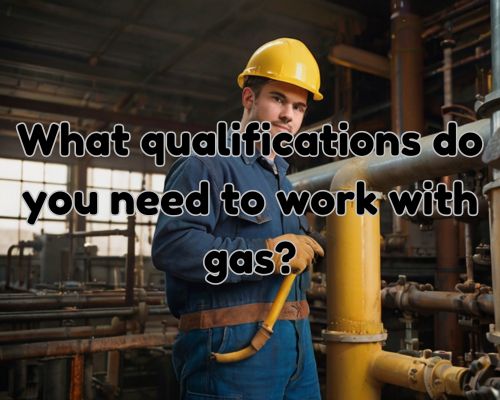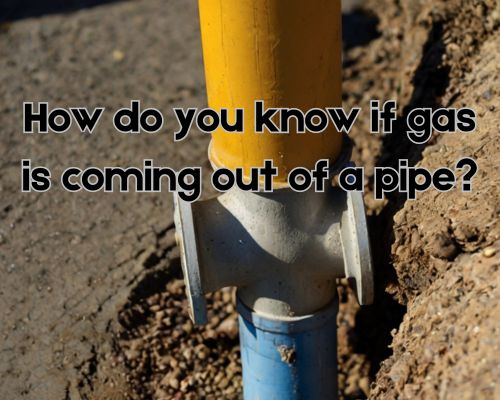What Qualifications Do You Need to Work with Gas in Australia?
Working with gas is a highly specialized trade that requires a combination of technical expertise, certifications, and compliance with stringent safety standards. In Australia, gas-related work is heavily regulated to ensure the safety of professionals, clients, and the broader community. This article dives deep into the qualifications, certifications, and steps needed to work with gas in Australia, providing essential insights for aspiring professionals and industry enthusiasts.

Understanding Gas Work in Australia
Gas work encompasses a range of tasks, including installing, maintaining, and repairing gas appliances, pipelines, and systems. Given the potential hazards of working with combustible materials, professionals must adhere to strict safety and regulatory requirements.
In Australia, these regulations are overseen by state and territory bodies, making it essential to understand the local rules in your specific region, whether you’re in New South Wales, Victoria, Queensland, or elsewhere.
Key Qualifications to Work with Gas in Australia
To become a qualified gas fitter in Australia, you must meet specific educational, training, and licensing requirements. Here’s a breakdown:
1. Certificate III in Gas Fitting
The primary qualification required is the Certificate III in Gas Fitting (CPC32720), a nationally recognized trade certificate. This course covers essential skills such as:
- Installing and servicing gas appliances
- Maintaining gas systems
- Conducting safety tests and compliance checks
- Working with both LPG (Liquefied Petroleum Gas) and natural gas systems
This certification is often completed as part of an apprenticeship, allowing you to gain hands-on experience under the supervision of a licensed gas fitter.
2. Apprenticeship Training
Hands-on training is a vital component of becoming a gas fitter. Apprenticeships combine practical, on-the-job training with classroom learning, ensuring you gain real-world experience. Typically, apprenticeships last three to four years, depending on your state or territory.
3. Gas Work License
In Australia, anyone performing gas-related work must hold a valid Gas Work License issued by the relevant authority in their state or territory. For instance:
- Victoria: Energy Safe Victoria (ESV)
- New South Wales: NSW Fair Trading
- Queensland: Queensland Building and Construction Commission (QBCC)
- Western Australia: Department of Mines, Industry Regulation and Safety (DMIRS)
To apply for a license, you must demonstrate competency, usually by completing your Certificate III and apprenticeship.
Additional Certifications for Gas Fitters in Australia
Depending on your specialization, you may need additional certifications. These include:
- White Card: Required for working on construction sites, this certification covers basic safety training.
- Restricted Electrical License: For gas fitters working on gas appliances with electrical components, such as hot water systems or ovens.
- Workplace Safety Certifications: Includes CPR and first aid training, ensuring you’re prepared for emergencies.
Compliance with Australian Gas Safety Standards
Australia follows strict safety standards for gas-related work. Key guidelines include:
- AS/NZS 5601.1: Covers the design, installation, and commissioning of gas installations.
- AS/NZS 1596: Relates to the storage and handling of LPG.
Licensed gas fitters are responsible for ensuring that all installations meet these standards and are safe for use, see https://plumberwarragul.com.au/.
Why Work with Gas in Australia?
High Demand for Skilled Professionals
Australia’s growing population and urbanization have increased the demand for skilled gas fitters. From new residential developments to industrial projects, the opportunities are vast.
Competitive Salaries
Licensed gas fitters in Australia earn competitive wages, with salaries ranging from $60,000 to $100,000 annually, depending on experience and specialization.
Diverse Career Opportunities
Gas fitting opens doors to various industries, including:
- Residential plumbing and heating
- Commercial gas systems
- Industrial gas pipeline projects
Challenges in Becoming a Gas Fitter
While the rewards are substantial, the journey to becoming a licensed gas fitter in Australia involves:
- Rigorous Training: The combination of coursework and apprenticeship requires dedication.
- State-Specific Requirements: Navigating the differences in licensing and regulations across states can be challenging.
See https://plumberwarragul.com.au/ for more.
Local Insights: Gas Work in Australian Cities
Sydney, New South Wales
In Sydney, the bustling construction and housing market drive significant demand for gas fitters. The diverse climate also means a high volume of work in heating system installations.
Melbourne, Victoria
Known for its cold winters, Melbourne sees consistent demand for gas appliance maintenance and installation, especially in the residential sector.
Brisbane, Queensland
In Brisbane, gas fitting often involves work on outdoor kitchens and barbecue systems, reflecting the region’s outdoor lifestyle.
How to Start Your Gas Fitting Career in Australia
If you’re considering a career as a gas fitter, here are the steps to follow:
- Research Your Local Requirements Contact your state or territory’s licensing body to understand specific regulations.
- Enroll in a Certificate III Program Choose a registered training organization (RTO) to start your qualification journey.
- Secure an Apprenticeship Work with a licensed gas fitter to gain practical experience.
- Apply for Your License Once qualified, submit your application for a Gas Work License in your state.
FAQs About Gas Work Qualifications in Australia
1. Do I need a plumbing license to work with gas?
In most cases, plumbing and gas fitting licenses are separate. However, many professionals choose to obtain both to broaden their skillset.
2. Can I work with gas without a license?
No, it is illegal to perform gas-related work in Australia without a valid Gas Work License.
3. How much does it cost to become a gas fitter?
Costs vary, but completing a Certificate III, apprenticeship, and licensing can total $10,000 to $20,000.
Conclusion
Working with gas in Australia is a rewarding career that combines technical expertise with practical problem-solving. By obtaining the necessary qualifications, completing rigorous training, and complying with local safety standards, you can establish yourself as a trusted professional in this high-demand industry.
If you’re ready to embark on this journey, take the first step by researching local training providers and apprenticeship opportunities in your area. Whether you’re in Sydney, Melbourne, Brisbane, or anywhere else in Australia, a fulfilling career as a gas fitter awaits!
